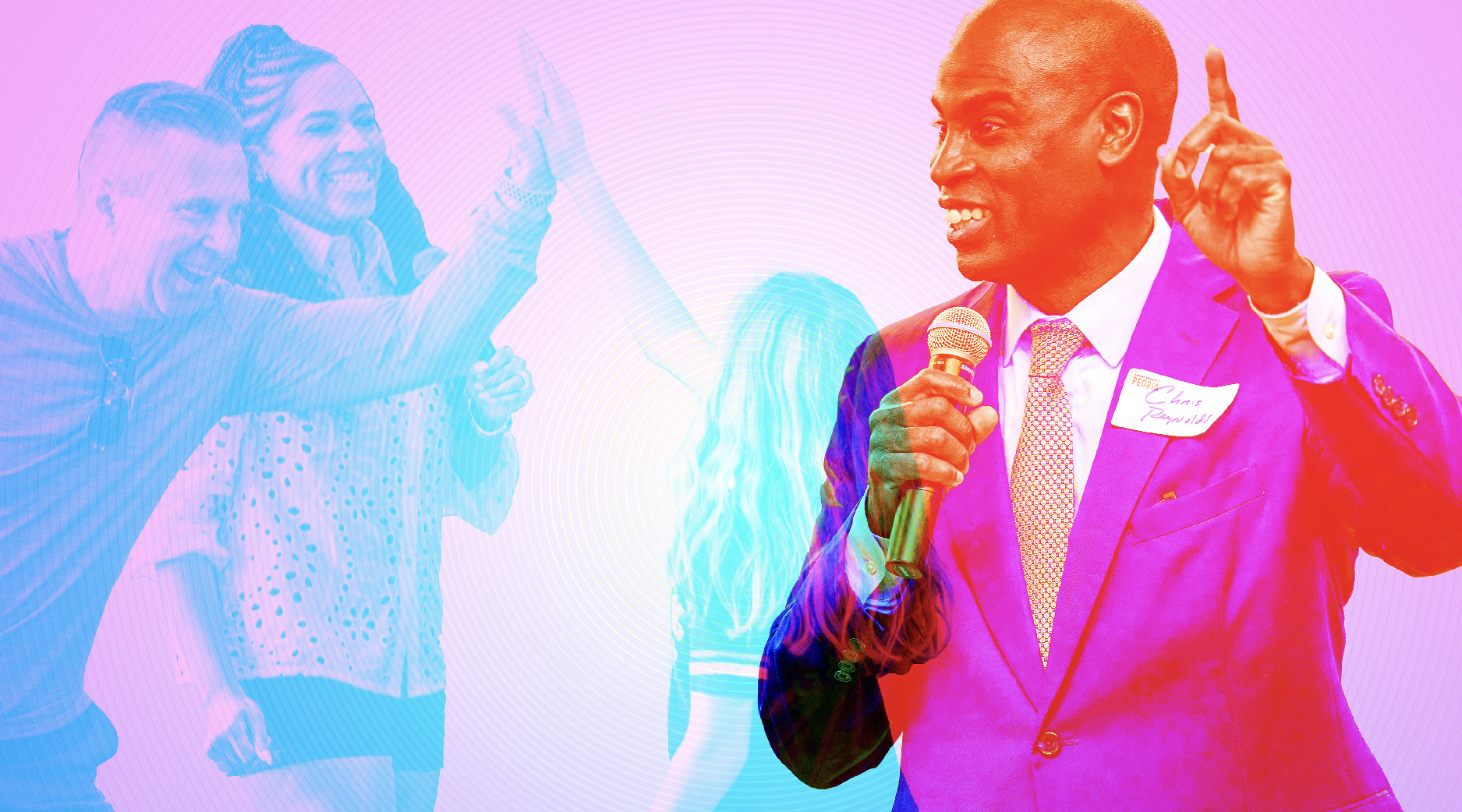Are you ready for some football?! Or maybe just ready for some ads?
If historical viewership rates are any indication, millions are getting psyched to tune in to Super Bowl LVII this Sunday as the Philadelphia Eagles and Kansas City Chiefs go head-to-head for the title of 2023 NFL champs.
So just how many people watch the big game? According to Nielsen, out of the top 32 most-watched single network TV broadcasts of all time, Super Bowl games accounted for 30 of them, based on average viewership. (For you trivia buffs out there, the only non-Super Bowl entries are the M*A*S*H* series finale in 1983 and one of the 2016 Presidential Debates.) This basically defines “prime real estate” for marketing opportunities. But, of course, it comes with a hefty price tag, and has long-sparked debate over whether Super Bowl ads are really worth it.
Aside from the cost, there are many other factors for a marketer to consider. So, we picked our own opponents to go head-to-head. In today’s match up, we’ll hear from “the media guy” Clay Deal, and “the big idea guy” Van Burnett. Clay is an Associate Media Director at Simantel leading our experienced team of media strategists and buyers. Van is a Creative Director working on some heavy-hitter accounts, like Caterpillar and Country Financial.
They give us some great insight and even predict who the advertising winner will be this year.
How is success defined when it comes to a Super Bowl ad? Is it different than any other type of ad?
Clay: For most brands, Super Bowl success equates to “share of water cooler.” Meaning, how many people are talking about your ad the next day at work or on social. Success =next day (or longer) discussion. The reason being, you’ve momentarily gained that top-of-mind awareness and now own a piece of real estate in the viewer’s mind.
To me, Super Bowl ad success is different from other TV spots due to the fact that the commercial could literally be labeled the “worst commercial of the night” by “experts” and pundits, and brands might still be able to attribute a positive lift in awareness and sales.
Van: When it comes to Super Bowl commercials, it’s pretty much the Olympics of creating “buzz.” Impressions (or views) will look staggering, conversions or immediate ROI will probably look underwhelming.
If I were to run a Super Bowl ad, my non-scientific barometer of success would be: did it break through the clutter in a way that caused people to remember and actually talk about the ad, brand or product?
From your perspective, what’s the biggest challenge of creating a great Super Bowl ad?
Clay: I think Super Bowl ads present many of the same challenges that any other ads do—breaking through the noise. But with the Super Bowl, the stakes are just so much higher because of; a.) volume of viewership; b.) cost of the spot; and c.) the precedent set to have the funny, memorable, talked-about-the-through-the-next-day spot.
The ad cost for a 30-second ad on national TV during prime time is $105K. The average cost of a 30-second ad for this year’s Super Bowl is $7M. How many companies even spend $7M for a full year of advertising? And these brands are “gambling” $7M on 30 seconds.
Van: I’d imagine the biggest challenge of a Super Bowl ad is two-fold. First, the event and reputation of commercials has already drawn a hungry crowd. So, the level of expectation of the general public is so much higher than it would be during a mid-season game. It’s like film critics screening for Sundance vs. watching a Lifetime movie.
The second challenge—everyone’s trying to stand out. If you haven’t noticed, the spots have gotten more and more outrageous decade over decade. So, do you try to join the creative chaos and run the risk of being lost in the circus? Or should the creative zig where others zag, with less ambitious creative—but more risk that you won’t grab the attention of watch parties around the country?
The cost for a Super Bowl ad certainly trumps others. Does that mean they require a higher production budget as well?
Clay: I think the production budget will be 100% determined by the creative concept and desired result of the commercial. The QR code ad by Coinbase is the perfect example. With nothing but a black screen and a bouncing QR code, viewers were left in wonder. If I recall correctly, the volume of users scanning the code during the spot crashed their site. Not only was it low budget but the “buzz” and convo around it was huge.
It’s also a perfect example of the “share of water cooler” metric I mentioned earlier. People loved it or hated it. But no matter what side of the fence (or cooler) you were on, people were talking about it the next day.
My final note on that (assuming) low-production spot that many don’t think about is the sheer volume of data Coinbase received from that ad. Whether or not people liked it, whether or not they signed up, Coinbase collected data on all those users scanning the QR code until the site went down. Depending on user privacy settings and their cookie policies, Coinbase was probably able to directly start monitoring ROAS in a matter of seconds of that QR code bouncing.
Van: In terms of production budget, it’s definitely a safe assumption to spend big. The world’s watching, so you don’t want your brand and content to look cheap or low quality. The exception, of course, is going the complete other way—where low production cost is practically part of the concept. So, you probably don’t want to be caught in the middle where you’re half-in/half-out on production. The low-cost/simplicity concept is a risky play, but if done well, that can also stand out and get “buzz” about how clever and cost-effective the spot was.
The best recent example is the QR code spot by Coinbase. Funny story, a close friend of mine was actually the copywriter for that campaign. But the irony was—there wasn’t any copy for the Super Bowl spot! So, she could only write the landing page copy. She said the brilliant idea actually came from the very top (the CEO, I believe). It makes you wonder how most CEOs would react if that Super Bowl spot was pitched to them.
How can brands connect with viewers and make a lasting impression? Both during the Superbowl and in all channels before and after the game.

Clay: A Nielsen study showed that 88% of Americans use a second screen while watching TV. Marketers need to take advantage of this fact. This is a perfect storm scenario of when a creative team, media team and digital strategy team need to work together around the clock on their Super Bowl campaign. The TV spot is 30 seconds. But what will a 15-second spot look like for Connected TV (CTV)? What is the call-to-action (CTA) in CTV ads? What does a 7-second or shorter cutdown look like for YouTube or Meta platforms? What does the landing page do to support a user journey? Is there even a CTA in the spot itself for users to take further action? Or will you rely on the reach and impressions from the big tv spot to raise organic search, combined with a very targeted post-Super Bowl companion campaign?
Van: Always, but more than ever with Super Bowl ads, it’s crucial to meet the audience where they’re at. It’s not the time to bend their ear for 30 seconds about your brand’s value promises. You need to draw them in by proving that you “get them” and then (of course) you have to entertain them. Any brand message or CTA should be nestled in—and not overwhelm—the creative. Because the world views Super Bowl commercials like a 30-second short film festival.
How can brands tap into the second screen that viewers are using while watching the big game? And how can brands that don’t have a Super Bowl ad still use the event to generate buzz in some other way?
Clay: As I alluded to earlier, if your brand doesn’t have the deep pockets to grab Super Bowl airtime, you can still use digital channels and CTV to put ads in front of your target audience during the event. Without the huge budget, brands can still use a Super Bowl themed campaign approach during this time. Create contests around the other ads, semi-poking fun at companies spending that much money. Showcase being affective and getting talked about the next day with a Super Bowl centered contest.
This could even roll down to mom ‘n pop shops on a local level…idea for local pizza joint: “So, we checked the budget and decided that we can’t afford to spend $7M on a Super Bowl commercial this year… but what we can do is give away 7 pizzas for the big game on Sunday to one lucky winner in Peoria, Illinois. Comment on this post and tell us your favorite toppings and we’ll pick one lucky winner for a Super Bowl feast.”
Van: For any brand that invests millions to run a Super Bowl ad, I’d bet 100% of them run supporting social media paid ads to catch people again on their phones. People don’t just watch the game. For three hours, millions are glued to social media along with the rest of the country—whether judging the halftime show or million-dollar commercials. So, brands gear up to reach audiences there.
 The idea is to amplify the buzz, right? Supporting content should give more context to the spot, invite user conversation, weave in a sweepstakes or simply have fun with the idea (behind the scenes, outtakes, etc.). Even if you don’t have millions to run a spot, it’s the top annual event in the country for “ambush marketing”—where you lean into the event even if you’re not a sponsor. That’s why you see so many mentions of “the big game.” I think that’s smart. People’s ears perk up at that, and you’re always fighting for attention with advertising.
The idea is to amplify the buzz, right? Supporting content should give more context to the spot, invite user conversation, weave in a sweepstakes or simply have fun with the idea (behind the scenes, outtakes, etc.). Even if you don’t have millions to run a spot, it’s the top annual event in the country for “ambush marketing”—where you lean into the event even if you’re not a sponsor. That’s why you see so many mentions of “the big game.” I think that’s smart. People’s ears perk up at that, and you’re always fighting for attention with advertising.
What’s your favorite Super Bowl commercial of all time?
Clay: The Coinbase ad is my favorite, for so many reasons…
A close second (and I’m aging myself here) is McDonald’s “The Showdown” commercial from 1993 with Larry Bird and Michael Jordan.
Van: My favorite Super Bowl spots probably belong to Budweiser. I won’t even Google this to see how well I remember. As a kid, I remember the frogs (Frankie and Louie?) chanting “Bud… weiz… errrr.” And then years later, the guys on the phone shouting “Whazzzaaaah!” They were obviously very dumb, but that’s what people gravitated toward at the time: something that’s not drowning in ulterior motives. So, in a weird way, they were brilliant in how simple and memorable they were. It came off like they didn’t try that hard, or even if we liked it or “got it”—and that’s why we loved them. So many ads these days try way too hard or do too much. But maybe I’m just getting old and grumpy.
Do you think it’s a good idea to release commercials on the internet prior to the game? What’s your overall reaction to these pre-releases; do you see a clear “winner” of the Super Bowl ad game?
Clay: I think releasing the ads pre-Super Bowl can be a good idea for some and a bad idea for others. If you’ve only got one spot and it’s a humor approach, and you release it pre-show, I think you’re taking away some of the anticipation and build up.
If you’ve got larger budgets and your creative/campaign approach is more of a “series” or has more legs, then I think it’s ok to tease or even release full ads. Because you’ve still got more ammunition.
Looking over the released ads, the Busch commercial with Sarah McLachlan and “Busch Guy” is probably my favorite so far. It’s 100% on brand, simplistic and pretty darn funny. The Sam Adams “Brighter Boston” is probably my runner up, for some of the same reasons. I’m most intrigued by the Coors Light, Miller Light, & DraftKings mashup. This is a perfect example of it being ok to start launching teasers or full videos early. If executed and done well, this one could be the overall winner. We’ll have to see where it goes.
 Van: I get the tactic of releasing ads ahead of time. It’s a leak strategy for articles like this one(!) or for the “know it all” at the party to say, “Yeah, did you see XYZ’s commercial yet?” Another plus is people might yell for the party to quiet down when they see the commercial start. That said, I personally think it takes the magic out of the live spot. It’s like letting kids open presents before Christmas morning. I’m more in favor of a commercial “tease” before the Super Bowl spot actually goes live.
Van: I get the tactic of releasing ads ahead of time. It’s a leak strategy for articles like this one(!) or for the “know it all” at the party to say, “Yeah, did you see XYZ’s commercial yet?” Another plus is people might yell for the party to quiet down when they see the commercial start. That said, I personally think it takes the magic out of the live spot. It’s like letting kids open presents before Christmas morning. I’m more in favor of a commercial “tease” before the Super Bowl spot actually goes live.
That said, like a hypocrite I checked out some of the pre-released ones. My favorite so far is the Bud Light “Easy to Enjoy” spot where Miles Teller dances to the customer hold music. It’s simple but relates with everyone, I’ve thought that song was a banger since I was calling pump manufacturers in 2013. Honorable mentions go to “A Brighter Boston” from Sam Adams and the Busch spot spoofing pet shelter commercials.
Oh wait, there’s also a football game. Who’s your pick to win? Do you think viewers are more interested in the game or the commercials?
Clay: Average Sunday NFL viewership in 2022 was around 19.9M, but the 2022 Super Bowl drew approximately 99M viewers. I think it’s a safe bet to say many people are more interested in the commercials and the festivities of the day, than they are the actual game.
I think it’s going to be a great game. Last I looked, I believe the Eagles were favored slightly to win, but I’m going with KC (as long as Andy Reid and staff don’t try to outcoach themselves).
Van: I care more about the World Cup than the Super Bowl, especially since the downfall of Aaron Rodgers, but I’ll predict Mahomes and the Chiefs win in a close game!
I think the social event side of the Super Bowl has outgrown the actual game. I’d guess 60% of the viewers care more about the halftime show, commercials and the watch parties. One more reason they should move the game to a Saturday or just make Monday a national holiday!
Common Themes to Take Away
There you have it, a look at Super Bowl advertising from two critical perspectives—media and creative. While Clay and Van each bring a different point of view based on their roles and experience, there are some common themes here to take away. I think it’s safe to say that the main goal is to capture attention, BUT not to forget the different ways and channels to reach users besides just the expensive Super Bowl commercial. And while this is always important, it’s crucial if buying a Super Bowl ad that teams from media, creative and digital strategy work together to get the most out of this buy.
Hope you all enjoy the game (and the commercials)!





